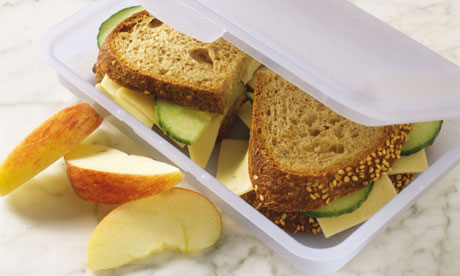 |
| Above is a photo of paper sludge. This photo was retrieved here. |
There is also a macroeconomic argument against recycling. In the Listverse article, Handley argues that demand for most recycled products is too high for their supply to keep up. This is not an argument against recycling; it is an extremely excellent motivation to recycle! Handley also claims that paper companies harvest 15 million acres of forest each year and plant 22 million. He says that this will decrease the demand for recycled materials. This is also not a negative effect of recycling, however, since the demand is already too high. The Listverse article explains that in the United States it costs $4000 to recycle one ton of plastic bags, but a ton of recycled bags only sells for $32. According to Handley, as a result of this low-rewards scenario, about 300,000 tons of the plastic bags end up in a landfill every year." As the technology for recycling plastic becomes more and more sophisticated in the coming decades, the cost for recycling plastic bags will decrease. In addition, the demand for recycled materials is high and will continue to grow, which will drive up the price for recycled bags, making the recycling of plastic bags profitable.
Recycling "haters" also criticize the technical process of recycling. They claim it has contamination issues which lower the quality of products made from recycled materials. A contamination is not just a plastic chip bag (clearly meant for trash) being put into a recycling bin and then someone on the recycling line picking it out - it could be an aluminum can containing lead paint becoming a soda can that someone drinks out of. In an article for Discover Magazine, Rachel Cernansky argues that any contamination will compromise the strength and durability of the recycled material that is produced. Contamination is a serious issue in the realm of recycling, but Materials Recovery Facilities work hard to make sure contaminations are so few they become nonthreatening.
 |
| This photo was retrieved here. |
 |
| A recycling bin on U of M's Ann Arbor Campus Diag. This photo was retrieved here. |
Lastly, the doubters argue that recycling negatively impacts consumer behavior with respect to the environment. Handley argues that recycling allows us an excuse to be more wasteful in other areas of our lives, and that it encourages consumption. As someone who continues to strive toward a more sustainable life with each passing day, I believe practicing sustainable behaviors has a positive re-enforcement effect. The more you do, the more you want to do. Or in consumption's case, the less you buy, the less you want to buy. Recycling is the 'gateway drug' of sustainable behaviors. It is easy to do, everyone has products that can be recycled, and most people have access to a recycling bin. On U of M's campus you have access to a recycling bin near every trash can! Overall, recycling is an excellent method of education for conservation of natural resources and living sustainably.
What do YOU guys think? Is recycling good for the environment and our society? I think the benefits (education, positive reinforcement, conservation) outweigh the cons (energy use, paper sludge, inefficiency). I also think that it would be nearly impossible to calculate the value of recycling in comparison to its costs. One would need to consider the energy used by recycling facilities and compare it to another calculation of how much energy is saved by recycling. The value of the material and energy saved from recycling would need to be incorporated, as well as the value of the property that will not become a landfill as a direct result of recycling. Lastly, one would have to consider the value recycling adds to the economy, considering it creates jobs across all sectors.
 |
| This photo was retrieved here. |
Westervelt, Amy. "Can Recycling Be Bad for the Environment?" Forbes. Forbes Magazine, 25 Apr. 2012. Web. 27 July 2014.
Handley, Andrew. "10 Ways Recycling Hurts the Environment - Listverse."Listverse. Listverse, 27 Jan. 2013. Web. 27 July 2014.
Cernansky, Rachel. "July/August 2014." Discover Magazine. Discover Magazine, 26 July 2009. Web. 29 July 2014.
"Recycling Saves Energy." Pennsylvania Department of Environmental Protection. State Government of Pennsylvania, 2014. Web. 30 July 2014.





























